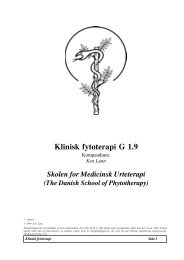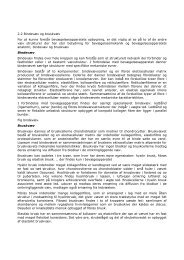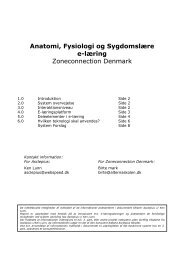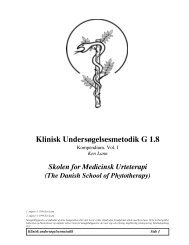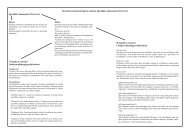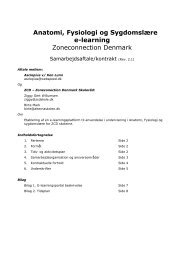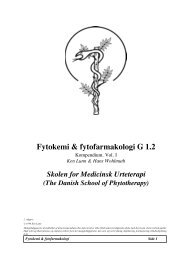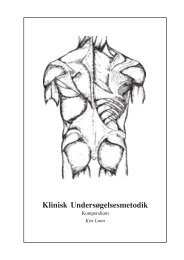PDF File - Asclepius Herbal Consultancy
PDF File - Asclepius Herbal Consultancy
PDF File - Asclepius Herbal Consultancy
You also want an ePaper? Increase the reach of your titles
YUMPU automatically turns print PDFs into web optimized ePapers that Google loves.
4. The Cardiovascular System<br />
~ the modern biomedical context<br />
To the Heart of the Matter<br />
Classical physiology has developed descriptions of the primary extrinsic CV control mechanisms<br />
mediated by the ANS and its regulation by the catecholamines (see appendicies; I: table 1., II: fig.<br />
1., III: table 2. & IV: fig. 2.). Within these descriptions, the CV system dynamics are presented in<br />
relation to discrete disassociated processes that involve system specific regulatory mechanisms. The<br />
application of this understanding has dictated the mechanistic approach to CV illness aetiology<br />
throughout the nineteenth and most of the twentieth centuries (Sterling & Eyer 1981).<br />
Extending this model, PNE has integrated emotional states into the description of the CV regulatory<br />
processes. This development has been concurrent with the progress in the aetiological<br />
understanding of CV illness. It has been shown that psychological factors can dysregulate the CV<br />
system control mechanisms, mediated by the interaction of the ANS, the hypothalamic-pituitary-<br />
adrenocortical axis (HPA) (see appendix V: table 3 & fig. 3.) (Appels 1997) and neurotransmitter<br />
activity (Thase & Howland, 1995). This can result in disturbances of CV system function, resulting<br />
in the development of CV illness.<br />
The model of the CV system that has developed within PNE, is one where the CV system is<br />
understood as been intimately related to the emotional state of the individual. Nixon & King (1997,<br />
p. 49) write: “The role of the emotional arousal in the genesis of heart diseases and sudden coronary<br />
death is commonly dismissed as anecdotal, but the development of appropriate technology is<br />
bringing it into the realm of probability and scientific approbation”.<br />
The following discussion presents the mechanisms, which form the basis for a biomedical<br />
understanding of the CV system in relation to emotional responses. Presented are some of the more<br />
intricate interrelationships, which are propose a mind-body approach to understanding the integrated<br />
role of CV system regulation and activity.<br />
4.1. The Role of the Hypothalamic-Pituitary-Adrenocortical Axis<br />
The role of the HPA axis in CV regulation is primarily mediated by the glucocorticoids. These are<br />
produced in response to adrenocorticotropic hormone (ACTH) production, which is stimulated by<br />
the release of corticotropin releasing factor (CRF) from the hypothalamus (see appendix V: table 3<br />
& fig. 3.).<br />
20



